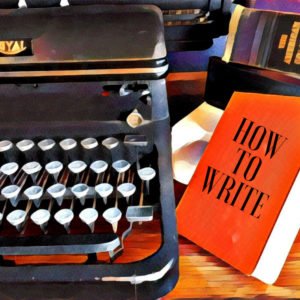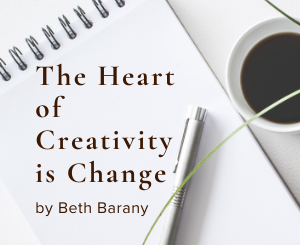The Journey is the Story by Catharine Bramkamp
 Let’s welcome back monthly columnist Catharine Bramkamp as she shares with us “The Journey is the Story.” Enjoy!
Let’s welcome back monthly columnist Catharine Bramkamp as she shares with us “The Journey is the Story.” Enjoy!
***
While teaching at the Scene and Plot Boot Camp with C.S. Lakin, I read Story Genius by Lisa Cron. Our first boot camp — three focused days in Tahoe, concentrated on plot. During the second book camp (still in Tahoe, I know, I live a hard life), we worked with our participants to deconstruct the perfect scene, then build their own. Story Genius offered a third element. (There are many elements, but I’m making it simple). I shared it in the boot camp and I’m sharing it here.
How the Journey Changes The Hero
That third element is how the story, not the hero’s journey, changes the hero.
Readers read books and watch films because they want to be the heroine. They want to experience what the heroine experiences.
Lisa Cron cites the Fifty Shades series as proof that being the heroine is more compelling than plot, believability, or the quality of the writing. Fifty Shades is extreme example, but instructive.
We want to live in that life for a couple of hours. We want to be someone else for an afternoon.
Our brains are wired to be inside a story, live the life of the hero. We need it, we crave it. And we clearly are willing to buy even bad books to get a good experience.
A Good Story
A good story offers the reader a long walk in another person’s shoes. Want to travel somewhere else? Pick up a book.
Want to understand a time? Pick up a book.
Want to get a grip on a whole culture? Yeah, pick up a book.
For a writer this means paying attention to how, why, and when your character changes.
Many of us create this naturally; we have a character who will grow because she must.
If you are fortunate, your character starts chattering away in your head. She will tell you what she wants, what she needs to change, and how her journey will effect that change. Lucky you.
Experts Statements
There are many famous, brilliant authors who will blithely explain that they just write and you should too. I LOVED Lisa Cron’s comment that expert storytellers, the ones who are gifted, bestselling novelists, are terrible instructors.
Experts often make statements like: drive in the fog and the story will unfold. I’m paraphrasing, which, for a new author, is very unhelpful advice.
It’s much like Simone Biles explaining that a triple flip on a two by four is easy. You just do it.
Don’t believe Simone, and don’t believe the gifted writer. Creating your believable character and their story is work. It’s good work, it’s fun, but it’s work.
Conscious and Deliberate
Most writers need to be far more conscious and deliberate about the process than merely driving with their eyes closed.
To help a character with their story, the essence of a book, the character needs to begin their journey believing one thing (or many things), and through plot challenges, fire, and sharp sticks, learns and grows, so the end of the book finishes up the plot with a bang and delivers the big Ah Ha moment for the hero:
- Nemo can manage on his own!
- Family is important!
- There is no place like home!
- I finished the Pacific Coast Trail!
The Goal
If the goal of your book is to make an enormous world-changing, war-igniting, cultural shift statement, then make your fictional character experience it first.
Your character needs to be real, flawed and struggle, just as a reader would, just like a reader could.
Don’t write up a politically correct, preachy character and expect anyone to pay attention. We rejected the know-it-all, perfect kid in our class, we’ll do the same in a book. Plus, that perfect character has nowhere to go. How can they change from perfect?
Begin with a character who is flawed and cranky
Create the plot, so that it will be a series of hoops the character must jump through to get to what they think they want. During all that hoop jumping, the character will change, one hoop at a time.
In the end, she can discover she doesn’t like hoop jumping. Or she becomes the hoop champion. Either way, she discovers, and she grows. Should a reader wonder about the life of a hoop jumper, she will pick up your book to experience it.
Journey Versus Plot
That sounds simple in a paragraph, but of course, it’s not. I was interested in the journey versus the plot. I was fascinated by the story versus the narrative. But bringing up that third idea to a group of writers concentrating on getting just one scene right? Low enthusiasm. They all nodded politely and returned to scratching away on their opening scene.
That’s okay. Write up the plot: this happens then this happens. Then, after your 50,000 words, return to the work and start asking why. Then ask to whom?
Now you have a fully realized novel. Now you have a good story. Beats driving in the fog.
New Class!
How Telling Your Story Today Can Change Your Tomorrow
Sign up for the 8-class Teachable course now: https://story-university.teachable.com/p/how-your-story-today-can-change-your-tomorrow
Contact me to participate in the 8-week interactive class via email starting January or February 2019.
***
ABOUT THE AUTHOR
When she’s not pulling her mother out of traffic, Catharine coaches and teaches fiction, non-fiction, and journal writing.
 Catharine Bramkamp is an author and writing coach — visit her at www.Catharine-Bramkamp.com. She has written 17 novels and 3 books on writing. Her poetry appears in over a dozen anthologies including And The Beats Go On (she was editor, as well) and the chapbook Ammonia Sunrise (Finishing Line Press). Her current book, Don’t Write Like We Talk, is based on her co-producer experience creating 200-plus episodes of the Newbie Writers Podcast. She is the Chief Storytelling Officer for technical companies because everyone has a story.
Catharine Bramkamp is an author and writing coach — visit her at www.Catharine-Bramkamp.com. She has written 17 novels and 3 books on writing. Her poetry appears in over a dozen anthologies including And The Beats Go On (she was editor, as well) and the chapbook Ammonia Sunrise (Finishing Line Press). Her current book, Don’t Write Like We Talk, is based on her co-producer experience creating 200-plus episodes of the Newbie Writers Podcast. She is the Chief Storytelling Officer for technical companies because everyone has a story.






